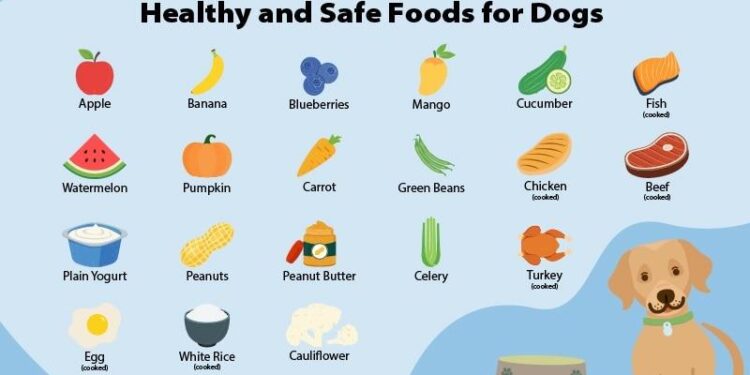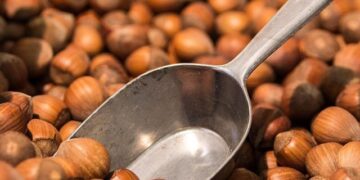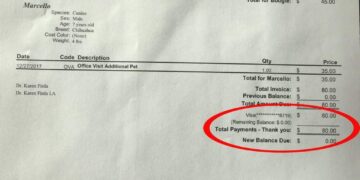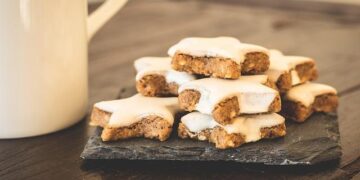Table of Contents
As an animal behaviorist with a PhD, I’m supposed to have the answers.
People come to me to solve the complex behavioral puzzles their dogs present.
Yet, for years, the most frustrating puzzle was the one living in my own home, curled up on a pile of expensive, ignored plastic.
His name is Leo, a Border Collie mix with a mind like a supercomputer and the energy of a small star.
And my house had become his toy graveyard.
There was the $30 puzzle toy he solved in ninety seconds and never touched again.
The indestructible chew toy that sat, pristine and un-chewed, for six months.
The mountain of plush squeakers he would either ignore completely or disembowel in a five-minute frenzy of fluff, leaving me to sweep up the carnage.1
I was doing what so many loving owners do: I saw his boredom and, out of guilt, I bought more stuff.1
Each trip to the pet store was a new hope, and each failed toy was another piece of evidence that, despite all my academic knowledge, I was failing my own dog.
The problem, I realized one evening while staring at the wreckage, wasn’t a lack of toys.
It was a complete lack of understanding.
We, as owners, have been conditioned to see toys as a luxury, a simple distraction, or a pacifier.
We buy what’s on sale, what looks cute, or what promises to be “indestructible.” But what if that’s fundamentally wrong? What if we’ve been asking the wrong questions entirely? My breakthrough came not from a behavioral textbook, but from my kitchen, while I was meticulously planning Leo’s meals.
It was a question that changed everything: What if a toy box isn’t a toy box at all? What if it’s a pantry?
The Epiphany: Your Dog’s Toy Box Isn’t a Toy Box—It’s Their Pantry
The moment of clarity was almost laughably simple.
I was weighing Leo’s kibble, ensuring he had the right balance of protein for muscle, carbohydrates for energy, and fats and micronutrients for his coat and cognitive health.2
I was a diligent nutritionist for his body.
Yet, when it came to his mind, I was feeding him the equivalent of junk food—a monotonous, unbalanced, and ultimately unsatisfying diet of the same type of “play.”
This is the paradigm shift that I call The Canine Enrichment Diet.
The core concept is this: Just as a balanced diet of varied food groups fuels a healthy body, a balanced “play diet” of varied enrichment activities fuels a healthy mind.
Each category of toy is not just a toy; it is a vital “nutrient” that serves a specific, non-negotiable psychological purpose.
These toys fulfill deep-seated behavioral needs that are as critical to a dog’s well-being as protein or calcium.4
This framework reframes the act of buying a toy.
It is no longer a random act of consumption.
It is a deliberate act of “meal planning” for your dog’s mind.
It transforms you from a frustrated “toy buyer” into a knowledgeable “enrichment chef,” capable of curating a psychological diet that allows your dog not just to survive their day, but to truly thrive.
Section 1: The Macronutrients of Play – Fueling Your Dog’s Core Instincts
A balanced human diet is built on a foundation of macronutrients: proteins, carbohydrates, and fats.
Each serves a distinct and vital function.2
Similarly, a dog’s psychological health is built on a foundation of core play categories that fuel their innate instincts.
Providing a variety of these “play macronutrients” is not about preventing boredom; it is about ensuring holistic development.
The need for this variety is not unique to dogs.
It mirrors, with remarkable precision, the foundational theories of play-based learning in human children.
When we provide a dog with a puzzle, we are engaging the same cognitive faculties that psychologist Jean Piaget identified in a child learning through the physical manipulation of their environment.7
When we engage in a game of tug, we are creating a “scaffolded” learning experience, much like the one described by Lev Vygotsky, where a more knowledgeable partner (us) guides the development of social rules and impulse control.9
A dog needs opportunities for both focused, “solitary play” with a chew toy and structured, “cooperative play” with us, reflecting the same social development stages Mildred Parten observed in children.7
Therefore, curating a balanced toy pantry is not just about making a dog happy; it is about providing a complete developmental curriculum that nurtures their mind.
Subsection 1.1: Protein (for Cognitive Growth & Repair) – Chew & Puzzle Toys
In our diet, protein builds and repairs muscle tissue.
In the Canine Enrichment Diet, this category of toys builds, maintains, and repairs cognitive function.
It is the essential nutrient for a healthy brain.
The “Why”: Chewing is one of the most fundamental and misunderstood canine behaviors.
It is not just a destructive habit; it is a natural, self-soothing activity that releases calming endorphins, reduces stress, and provides a crucial outlet for mental energy.5
Providing a safe and appropriate outlet for chewing is a necessity, not a luxury, as it prevents the destructive chewing of furniture and promotes dental health by scraping away plaque.12
Puzzle toys are the other half of this cognitive protein.
They present a dog with a problem to solve: how to manipulate an object to get a reward.
This process builds confidence, hones problem-solving skills, and can help prevent the cognitive decline associated with aging.4
For intelligent, high-drive breeds, puzzle toys are not optional; they are a critical component of their mental health care, preventing the boredom that often leads to anxiety and destructive behaviors.5
Classic examples include stuffable rubber toys like Kongs, treat-dispensing balls, intricate puzzle boards like those from Nina Ottosson, and scent-based snuffle mats.15
Subsection 1.2: Carbohydrates (for Physical Energy & Bonding) – Fetch & Tug Toys
Carbohydrates are the primary fuel for physical activity in the human body.2
For dogs, interactive toys like fetch balls and tug ropes are the “healthy carbs” that fuel their need for vigorous physical exertion.
Critically, however, they provide more than just exercise; they are the primary nutrient for strengthening the social bond between a dog and their human.
The “Why”: A common frustration among owners is a dog who seems to have boundless energy.
Interactive play provides a constructive and joyful outlet for that energy.16
A good game of fetch is more than just throwing a ball; it satisfies a dog’s innate instinct to chase and retrieve.5
Tug-of-war, when played with clear rules, is a fantastic way to build a dog’s confidence and teach impulse control.18
The American Kennel Club notes that, in many cases, the best toy for a dog is one that involves their owner.11
This “people time” is essential for expending pent-up mental and physical energy, which can significantly reduce stress and problem behaviors.16
This category includes classic tennis balls (though durable rubber balls are often a safer choice), ball launchers like the Chuckit! that make fetch more exciting, dog-safe frisbees, and durable rope toys.16
It is vital, however, to supervise play with toys like ropes to ensure strands are not ingested, which can cause dangerous intestinal blockages.19
Subsection 1.3: Healthy Fats & Micronutrients (for Sensory & Emotional Health) – Scent Work & Comfort Toys
Healthy fats are essential for brain function, and micronutrients like vitamins and minerals support countless invisible but vital processes in the body.3
In the Canine Enrichment Diet, sensory and comfort toys are the “micronutrients” of play.
They may be needed in smaller quantities than the “macros,” but they are absolutely essential for a dog’s sensory regulation and emotional well-being.
The “Why”: A dog’s primary sense is smell.
Their world is a rich tapestry of scents that we can barely imagine.
Engaging this powerful sense through scent work is one of the most effective and calming forms of enrichment available.4
Activities like hiding treats in a snuffle mat or simply scattering kibble in the grass for them to find allows a dog to use their most natural skill.
These “nose work” games are mentally taxing in a positive way, helping to calm an anxious or over-stimulated dog without requiring intense physical exercise.14
Often, simple homemade scent games using a rolled-up towel or a cardboard box are more engaging and satisfying for a dog than an expensive plastic toy.4
Comfort toys address a dog’s emotional needs, which are just as important as their cognitive and physical ones.
For dogs who are gentle “cuddlers” rather than “destroyers,” a soft plush toy can provide a profound sense of security, much like a child’s favorite stuffed animal.11
These toys can help alleviate anxiety, particularly separation anxiety, by providing a familiar and soothing object to hold onto.13
The SmartPetLove Snuggle Puppy, which mimics the warmth and heartbeat of a littermate, is a prime example of a toy designed specifically to meet this emotional need.17
| Dietary Nutrient | Corresponding Toy Category | Core Psychological Benefit |
| Protein | Chew & Puzzle Toys | Cognitive Growth & Stress Relief |
| Carbohydrates | Fetch & Tug Toys | Physical Exertion & Social Bonding |
| Healthy Fats / Micronutrients | Scent Work & Comfort Toys | Sensory Stimulation & Emotional Security |
Section 2: The Food Safety Administration – A Non-Negotiable Guide to Toxin-Free Toys
Once we understand the types of “food” our dogs need, we must turn our attention to the quality of the ingredients.
This is not an exaggeration.
The dog toy industry is alarmingly unregulated.
Unlike human food, which is overseen by agencies like the FDA, dog toys are only regulated by the Consumer Product Safety Commission in the rare case that they pose a risk to humans.24
This leaves a gaping hole in safety oversight for the animals actually using the products.
This lack of regulation creates a significant “information asymmetry.” Manufacturers are aware of the industrial chemicals they use, but consumers are often left in the dark.
The simple act of buying a dog toy becomes a high-stakes exercise in risk management, where the owner must, by necessity, become their own regulatory agency.
We would never knowingly feed our dogs food contaminated with poison.
We must apply that same vigilance to the objects they put in their mouths for hours every day.
The mechanical action of chewing, combined with saliva, can actively leach toxic chemicals from unsafe toys directly into a dog’s system.25
This transforms the issue from a passive risk into an active and present danger.
Subsection 2.1: Reading the Ingredients Label – The Hidden Toxins in Your Dog’s Toys
Empowering yourself starts with knowing what to avoid.
Many common dog toys, especially cheaply made plastic ones, can contain a cocktail of harmful chemicals.
Here are the worst offenders:
- BPA (Bisphenol A): A chemical commonly used in plastics, BPA is a known endocrine disruptor that has been shown to affect metabolism and hormone systems in dogs.19
- Heavy Metals (Lead, Chromium, Cadmium): These toxic metals are sometimes found in the paints and dyes used on toys, particularly those manufactured in countries with lower safety standards. Lead can cause severe neurological damage, while cadmium is a known carcinogen that can harm a dog’s joints, heart, and lungs.19
- Phthalates: These chemicals are used to soften hard PVC plastic and make it more flexible. They are not chemically bonded to the plastic and can easily leach out as a dog chews. Phthalates are linked to serious reproductive and developmental problems, making them especially dangerous for puppies.19
- PVC (Polyvinyl Chloride): Also known as vinyl, this is the plastic that contains phthalates and chlorine. It is often identified by the #3 recycling symbol. The rule here is simple and non-negotiable: if you see a #3 on a dog toy, put it back on the shelf.25
- Formaldehyde: This chemical, banned in many countries for use in consumer goods, can still be found in the adhesives used to bond toy parts together. It is known to cause skin irritation and respiratory issues.19
Subsection 2.2: Beyond Chemicals – Assessing Physical & Structural Hazards
A toy can be free of toxins but still be dangerous due to its physical design.
Structural integrity is just as important as chemical safety.
- Choking & Blockages: This is one of the most common toy-related emergencies. Toys that are too small for your dog can be swallowed whole. Toys with small, easily removed parts—like the plastic eyes and noses on stuffed animals, bells, or even internal squeakers—can be torn off and ingested, causing choking or life-threatening intestinal blockages.19 The stuffing inside plush toys and the individual strands of frayed rope toys pose a similar and very serious risk.19
- Dental Damage: Many owners, in search of a durable toy, make the mistake of choosing one that is too hard. A toy that is harder than a dog’s tooth can cause painful and expensive fractures. A good rule of thumb is the “thumbnail test”: press your thumbnail firmly into the toy’s surface. If it doesn’t leave a slight indent, the toy is likely too hard for safe, sustained chewing.24
- Durability Failures: Cheap, brittle plastics are a significant hazard. When a powerful chewer breaks these toys, they don’t just fall apart; they can shatter into sharp, jagged pieces that can cause severe lacerations to a dog’s mouth, gums, and paws.19
Subsection 2.3: The “USDA Organic” Seal of Approval – How to Identify Genuinely Safe Toys
Navigating this minefield can feel daunting, but there are clear indicators of a safe, high-quality toy.
Think of these as the “certified organic” or “non-GMO” labels of the toy world.
- Look for Safe Materials: The best and safest toys are typically made from a short list of trusted materials. These include high-quality natural rubber (from reputable brands, as the term “natural” is not legally defined), organic cotton, hemp, food-safe silicone (often used for lick mats), and durable, non-toxic nylon as used by brands like Nylabone.19 Brands like West Paw have also developed proprietary safe materials like Zogoflex.27
- Read the Labels: Reputable manufacturers will be transparent about their materials. Look for explicit labels stating a product is “BPA-free,” “phthalate-free,” and “non-toxic.” While not always present, third-party certifications like MadeSafe or GOTS (for organic textiles) are excellent signs of a commitment to safety.19
- Trust Reputable Brands: In an unregulated market, brand reputation is one of your most powerful tools. Companies like KONG, West Paw, Nylabone, Goughnuts, and Planet Dog have built their businesses on producing durable, dog-safe products and are generally transparent about their manufacturing processes and materials.19
| Serve Freely (Safe, Vet-Approved Materials) | Avoid at All Costs (Hazardous Materials & Features) |
| Natural Rubber (from reputable brands) | PVC / Vinyl (#3 Plastic) |
| Organic Cotton / Hemp | Phthalates |
| Durable Nylon (e.g., Nylabone) | BPA (Bisphenol A) |
| Food-Safe Silicone (e.g., Lick Mats) | Lead, Cadmium, Chromium |
| Zogoflex / Seaflex (West Paw) | Formaldehyde |
| Flimsy / Brittle Plastic | |
| Small / Glued-on Parts | |
| Ingestible Stuffing / Strings |
Section 3: Custom Meal Planning – Curating the Perfect Toy Diet for Your Unique Dog
With a solid understanding of the “dietary” framework and safety principles, we can now move to the most important part: creating a personalized enrichment plan for your unique dog.
A one-size-fits-all approach is precisely why so many toy boxes become graveyards.
An elite athlete’s diet is vastly different from that of a casual walker, and the same principle applies to our dogs.
Subsection 3.1: Step 1 – Identify Your Dog’s “Dietary Profile” (Play Style Assessment)
The first and most critical step is to honestly assess your dog’s innate play style.
Observing their natural behavior will tell you exactly what kind of “psychological nutrition” they crave most.
This simple act of observation will save you hundreds of dollars and immense frustration.
Most dogs fall into one or a combination of these profiles 23:
- The Power Chewer: This dog’s primary mode of interaction with a toy is to gnaw on it, often with the goal of destruction. They need highly durable, safe chew toys to satisfy this deep-seated need.11
- The Scholar (Puzzle-Solver): This dog is intelligent and gets bored easily. They need constant mental challenges and thrive on puzzle toys, treat dispensers, and enrichment games that make them think.11
- The Athlete (Fetcher/Tugger): This is a high-energy dog who lives for action. Their greatest joy comes from interactive games of fetch or tug with their human companion. They need toys that facilitate this shared activity.11
- The Cuddler: This dog is gentle with their toys. They often carry them around, sleep with them, and treat them like companions. They seek comfort and security from soft, plush items.11
To help, ask yourself these questions: When you give your dog a new toy, what is the very first thing they do? Do they immediately start thrashing it and trying to rip it apart (Power Chewer)? Do they nudge it around, looking for a way to get something out of it (Scholar)? Do they drop it at your feet, waiting for you to throw it (Athlete)? Or do they gently carry it to their bed (Cuddler)? Your answer is the key to stocking their pantry correctly.
Subsection 3.2: Step 2 – Stocking the Pantry (Curated Recommendations for Every Profile)
Once you’ve identified your dog’s primary play style, you can start stocking their “pantry” with toys that will actually nourish their mind.
While every dog benefits from a variety of all toy types, you should “major” in their preferred category.
- For Power Chewers: Your focus is on extreme durability and safety.
- Top Picks: KONG Extreme (the black version), Nylabone Power Chew, Goughnuts toys (many of which have a lifetime guarantee), and durable nylon toys from brands like Bullymake.27 These are designed to withstand punishing jaws while being made from non-toxic, safe materials.
- For Scholars: Your goal is to keep their brilliant minds engaged.
- Top Picks: Nina Ottosson by Outward Hound puzzle toys (which come in difficulty levels 1-4), the KONG Wobbler, stuffable treat toys like the West Paw Toppl and Qwizl, and a variety of snuffle mats.15 Rotating these toys is key to keeping the challenge fresh.
- For Athletes: You need toys built for interactive, high-energy fun.
- Top Picks: The Chuckit! Classic Ball Launcher is a must-have for serious fetch enthusiasts. Durable rubber balls from Chew King or Ruffwear are safer alternatives to standard tennis balls. For tug, look for durable toys like the Goughnuts Tug or stuffing-free plush toys like the Outward Hound Invincibles Snake.17
- For Cuddlers: You can provide soft toys, but safety is still paramount.
- Top Picks: The SmartPetLove Snuggle Puppy is ideal for anxious dogs needing comfort. For gentle play, look for well-made plush toys from brands like GoDog, which feature a special “Chew Guard” lining for extra durability, or stuffing-free options to minimize risk if the toy is eventually torn.17
Subsection 3.3: Step 3 – Serving the Meal (Best Practices for Play)
Having the right “ingredients” is only half the battle.
Knowing how to “prepare and serve the meal” is what makes the diet effective.
- Practice Toy Rotation: This is perhaps the most impactful and underutilized strategy. Don’t leave all of your dog’s toys out all the time. Keep most of them put away and rotate a few out each week. A toy that hasn’t been seen in a week can feel brand new and exciting again, dramatically increasing its value and preventing “toy boredom”.18
- Supervise, Supervise, Supervise: No toy is truly 100% indestructible. It is crucial to supervise your dog with any new toy to understand how they interact with it. Toys with parts that could be ingested, like rope toys or complex puzzles, should always be used under supervision and put away afterward.18 Only toys you know are safe and durable for your specific dog (like a classic KONG) should be left for unsupervised use.
- Teach Your Dog to Play: Many owners complain that their dog doesn’t know how to play with toys.1 Often, they simply need to be shown how! Get on the floor and play with them. Make the toy exciting. For puzzle toys, start with an easy win by using high-value, smelly treats and helping them succeed at first. Freezing a stuffed KONG with peanut butter or yogurt can make it a much more engaging and long-lasting challenge.16 Your engagement is the secret ingredient that makes any toy more appealing.
| Play Style Profile | Top Toy Recommendation (Brand) | “Nutritional” Purpose (Key Features) | Best For | Safety Notes |
| The Power Chewer | Extreme Dog Toy (KONG) | Ultra-durable rubber for solo chewing; stuffable for long-lasting enrichment. | Aggressive chewers; unsupervised crate time. | Inspect regularly for cracks; discard if damaged. |
| The Scholar | Hide N Slide Puzzle (Outward Hound) | Level 2 puzzle with sliding blocks to challenge problem-solving skills. | Food-motivated dogs who get bored easily. | Supervise play; not a chew toy. Clean regularly. |
| The Athlete | Classic Ball Launcher (Chuckit!) | Allows for long-distance fetch, satisfying high prey drive and energy needs. | High-energy dogs in open, outdoor spaces. | Use durable rubber balls, not standard tennis balls which can be abrasive. |
| The Cuddler | Snuggle Puppy (SmartPetLove) | Provides comfort with a simulated heartbeat and warmth; reduces anxiety. | Puppies, anxious dogs, and gentle companions. | Not a chew toy. Remove battery pack if chewing occurs. |
Conclusion: From Toy Buyer to Enrichment Chef
Returning to Leo and his graveyard of plastic ghosts, the shift was transformative.
Once I stopped thinking like a “toy buyer” and started acting as his “enrichment chef,” everything changed.
I audited his “pantry,” throwing out the cheap, potentially toxic plastics and the ignored novelties.
I replaced them with a curated selection based on his needs.
His new “diet” included a durable Nylabone for his “protein” chewing needs, which he now works on every evening.
His meals are often served in a snuffle mat or a KONG Wobbler, providing the “cognitive protein” his brilliant Border Collie mind craves.
Our afternoons are now reserved for his “carbohydrates”—an intense game of fetch with his Chuckit! launcher that leaves him physically tired and happy.
And for his “micronutrients,” a soft, stuffing-free plush toy waits in his crate, a source of comfort that has dramatically reduced his separation anxiety.
The toy graveyard is gone.
In its place is a small, purposeful collection of tools that nourish his mind, body, and spirit.
He is a calmer, more confident, and more fulfilled dog.
Our bond, forged through the shared language of purposeful play, is stronger than ever.
This is the power of The Canine Enrichment Diet.
It gives you a framework to see beyond the marketing and the endless aisles of plastic.
It empowers you to understand your dog’s deepest psychological needs and to meet them with intention and wisdom.
You are no longer just a consumer.
You are a curator, a nutritionist, a chef for your dog’s well-being.
And while this framework is a powerful tool, never forget that the most enriching, most valuable, and most sought-after “toy” in your dog’s world will always be you.
Works cited
- My dog won’t play with toys : r/dogs – Reddit, accessed August 14, 2025, https://www.reddit.com/r/dogs/comments/sbnwnm/my_dog_wont_play_with_toys/
- Eating a balanced diet – NHS, accessed August 14, 2025, https://www.nhs.uk/live-well/eat-well/how-to-eat-a-balanced-diet/eating-a-balanced-diet/
- Healthy Eating Plate – Harvard Nutrition Source, accessed August 14, 2025, https://nutritionsource.hsph.harvard.edu/healthy-eating-plate/
- Enrichment ideas for dogs | Guide Dogs, accessed August 14, 2025, https://www.guidedogs.org.uk/getting-support/information-and-advice/dog-care-and-welfare/dog-enrichment-ideas/
- Comprehensive Guide to Enrichment Activities for Dogs – Sniffspot, accessed August 14, 2025, https://www.sniffspot.com/blog/dog-enrichment/comprehensive-guide-to-enrichment-activities-for-dogs
- What is a healthy diet? Recommended Serving Infographic – American Heart Association, accessed August 14, 2025, https://www.heart.org/en/healthy-living/healthy-eating/eat-smart/nutrition-basics/what-is-a-healthy-diet-recommended-serving-infographic
- Understanding Play Theories: A Guide for Play Based Teachers …, accessed August 14, 2025, https://www.myteachingcupboard.com/blog/play-theories
- Major Theories of Child Development: Frameworks for Learning, accessed August 14, 2025, https://www.amu.apus.edu/area-of-study/education/resources/major-theories-of-child-development/
- Understanding Play Theories: A Guide to Early Childhood Development for Early Childhood Educators – TeachKloud, accessed August 14, 2025, https://teachkloud.com/early-childhood-education/play-theories-for-early-childhood-educators/
- The Psychological Theories Behind Learning Through Play – Pentagon Play, accessed August 14, 2025, https://www.pentagonplay.co.uk/news-and-info/psychology-learning-through-play
- How to pick the best toy for 5 different types of dogs – Etailpet, accessed August 14, 2025, https://etailpet.io/blog/how-to-pick-the-best-toy-for-5-different-types-of-dogs
- All About the Different Types of Dog Toys – Multipet, accessed August 14, 2025, https://www.multipet.com/all-about-the-different-types-of-dog-toys/
- Types of Dog Toys – The Chewing Store, accessed August 14, 2025, https://thechewing.com.au/blogs/news/types-of-dog-toys
- Enrichment Activities – Animal Friends, accessed August 14, 2025, https://thinkingoutsidethecage.org/resources/enrichment/
- The 11 Best Dog Puzzle Toys – The Spruce Pets, accessed August 14, 2025, https://www.thesprucepets.com/best-dog-puzzle-toys-5192028
- Dog Toys and How to Use Them – PAWS, accessed August 14, 2025, https://www.paws.org/resources/dog-toys/
- The 17 Best Dog Toys for Mental Enrichment, Tested and Reviewed, accessed August 14, 2025, https://www.thesprucepets.com/best-interactive-dog-toys-8363714
- Enrichment activities to keep your dog entertained | Dogs Trust, accessed August 14, 2025, https://www.dogstrust.org.uk/dog-advice/life-with-your-dog/enrichment/enrichment-activities-for-dogs
- How to Identify a Dangerous Dog Toy, According to … – Rover.com, accessed August 14, 2025, https://www.rover.com/blog/toxic-pet-toys-beds-safety-guide/
- Choosing Safe and Fun Toys for Your Dog’s Needs – Petmate, accessed August 14, 2025, https://www.petmate.com/blogs/petmate-academy/how-to-pick-safe-dog-toys
- Best Interactive Dog Toys to Beat Boredom – Dog Trotting, accessed August 14, 2025, https://dogtrotting.net/archives/26296
- Dog does not care about any toys whatsoever – Reddit, accessed August 14, 2025, https://www.reddit.com/r/dogs/comments/1d2jffq/dog_does_not_care_about_any_toys_whatsoever/
- Best Toy for Your Dog’s Play Style & Personality – Good Dog People, accessed August 14, 2025, https://gooddogpeople.com/blogs/dog-talk/best-toy-for-your-dog-s-play-style-personality
- A Guide to Safe Dog Chews and Non-Toxic Toys | The National Canine Cancer Foundation, accessed August 14, 2025, https://wearethecure.org/chews-wisely-a-guide-to-safe-dog-chews-and-non-toxic-toys/
- How to Avoid Buying Pet Products with Toxic Chemicals – LeafScore, accessed August 14, 2025, https://www.leafscore.com/eco-friendly-pet-products/how-to-avoid-buying-pet-products-with-toxic-chemicals/
- Pet Toy Safety – The Pets Larder, accessed August 14, 2025, https://thepetslarder.co.uk/blogs/news/pet-toy-safety
- Indestructible Dog Toys Tested for Tough Chewers – DogTuff, accessed August 14, 2025, https://www.dogtuff.com/collections/tuff-tested-chew-toys
- The 16 Best Dog Toys for Tough Chewers – The Spruce Pets, accessed August 14, 2025, https://www.thesprucepets.com/best-dog-toys-for-tough-chewers-7563640
- 5 Best Indestructible Dog Toys – Reviewed By Our Shelter Dogs! – RescueDogs.co.uk, accessed August 14, 2025, https://www.rescuedogs.co.uk/indestructible-dog-toys/






